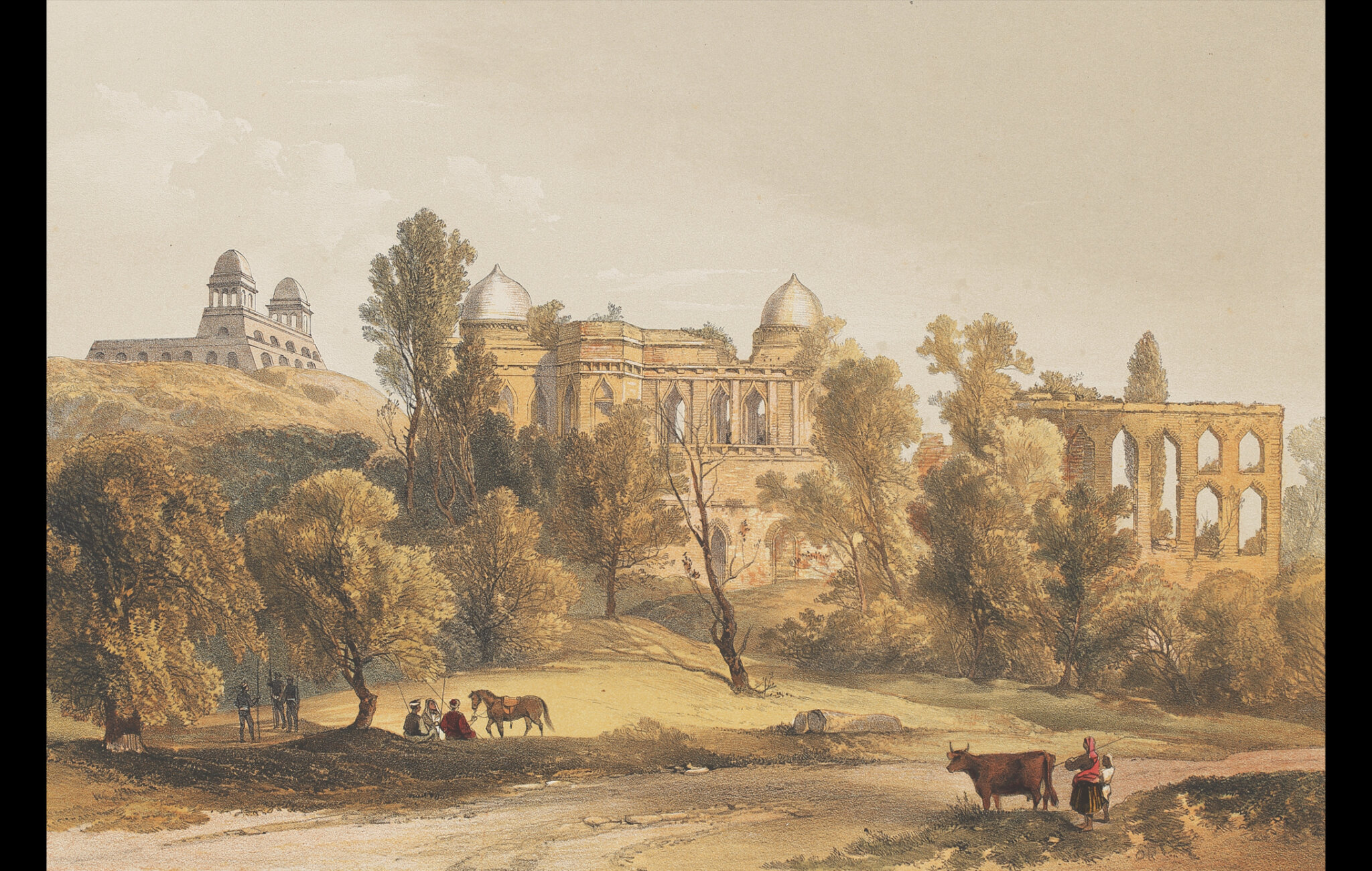
This engraving from the book The Ruins of Mandoo: The Ancient Mahommedan Capital of Malwah in Central India, 1859 illustrates features of Mandu in western Madhya Pradesh, an ancient city of historical and architectural significance.
The beautiful fortress town can be dated back to the 6th century, since when it has continually been the site of many conquests and civilisations, including those of the Paramara Dynasty, the Delhi Sultanate and the Mughals. These empires left behind examples of spectacular architecture such as Jami Mosque (Jumah Musjid), Jahaz Mahal, the palace of Baz Bahadur along with a pavilion he built for his beloved queen Roopmati, the tomb of Hoshang Shah and many more.
From 1555 to 1566, Mandu was ruled by Daulat Khan under the name of Sultan Baz Bahadur, whose palace is depicted in this particular lithograph. It was built in 1509, years before he came to power and is situated over a reservoir called Rewa Kund, which supplied water to the palace.
The Roopmati (Roop Muttee) Pavilion is situated on the edge of a cliff overlooking the Nimar valley. Located to the South of the Baz Bahadur Palace, the Pavilion is named after Rani Roopmati, the Queen of Sultan Baz Bahadur.
Title
Palace of the Sultan Baz Bahadoor, and Pavilion of Roop Muttee, his QueenPeriod
1859Artist
Captain Claudius HarrisEngraver
J Guiaud based on sketches by Captain Claudius HarrisPublisher
Day and Son, LondonDimensions
H: 27.5 x W: 37.5 cmAccession No.
2020.1.1 (4)Genre: Etchings & Engravings
